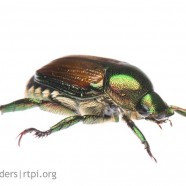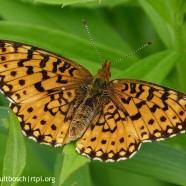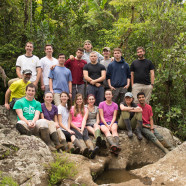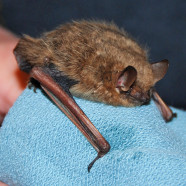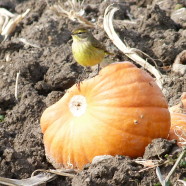Japanese Beetle (Popillio japonica)
This week is invasive species awareness week. There are plenty species to highlight in just one short week, but here’s one that seems to be particularly prevalent this time of year. The Japanese Beetle (Popillio japonica) is easily recognized by the characteristic rows of pale hairs on its abdomen and can be found in dense concentrations on a variety of fruit-bearing plants. Anyone growing blueberries, raspberries or blackberries can attest to how much damage they can do in a short period of time, if left unchecked!
Read MoreButterflies – National Pollinator Week
This is the last day of National Pollinator Week which ran from June 16 through June 22. It turned out to be very appropriate timing for us in Western New York and Northwestern Pennsylvania as more insects emerged and vegetation continued to grow very rapidly. I actually had some days with several more “first of year” sightings of bees, dragonflies, and butterflies, the group I wanted to focus on and share photos of in this entry. The following were photographed in the last week in the Chautauqua-Allegheny region in public locations like state game lands, wildlife management...
Read MoreRTPI Staff Teaches Litchfield High School Students in the Costa Rican Rainforest
Between February 24 and March 7 RTPI Affiliate Sean Graesser and Director Twan Leenders traveled to the Costa Rican rainforest again to teach Connecticut high school students about the importance of rainforest conservation as part of the Forman School Rainforest Project. This unique hands-on biology course based out of the Forman School in Litchfield, but also catering to high school seniors and juniors of local public high schools, is currently in its 22nd year. Every year a group of 12-14 students travels to the remote (and difficult to reach) rainforest preserve Rara Avis, where they work...
Read MoreBats and White-nose Syndrome
On the day after Halloween as we move closer towards winter I thought it would be appropriate to talk about one of the holiday’s most emblematic creatures – the bat. Some are facing a possible extinction level event due to White-nose Syndrome which is killing several hibernating species in the northeast U.S. and spreading across the country rapidly. Most people know that bats hibernate in caves (thanks Batman), and each hibernaculum can have tens of thousands of bats or more. Even with these high numbers there are mortality rates nearing 100% in some locations! This USFWS graphic...
Read MorePalm Warbler (Dendroica palmarum) & Pumpkin by Scott Kruitbosch
Birds like this Palm Warbler (Dendroica palmarum) can get into the season, too! They enjoy foraging in farm fields with what is left after the harvest with a variety of species feeding on the produce and others feeding on the insects that it attracts.
Read More



